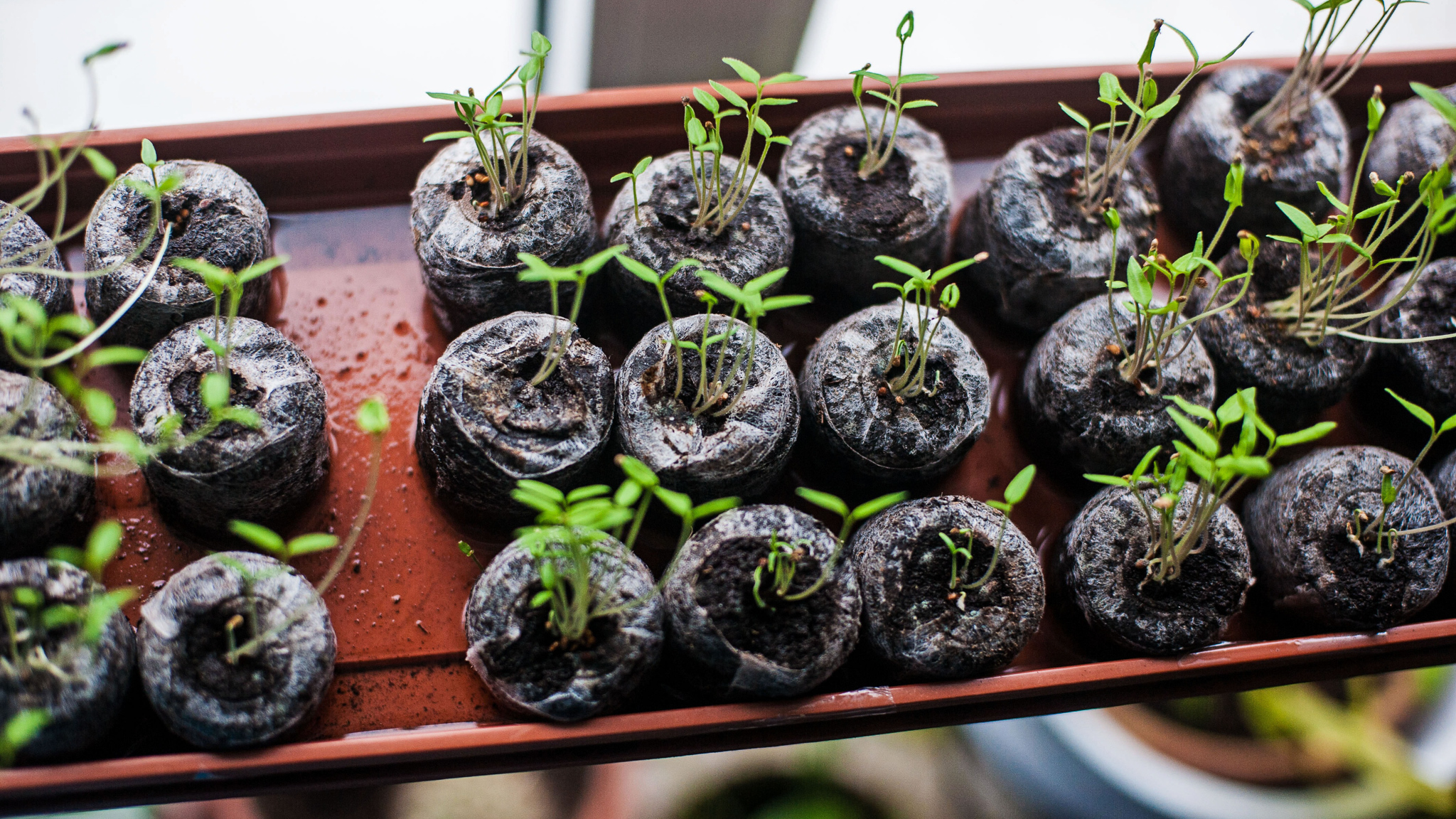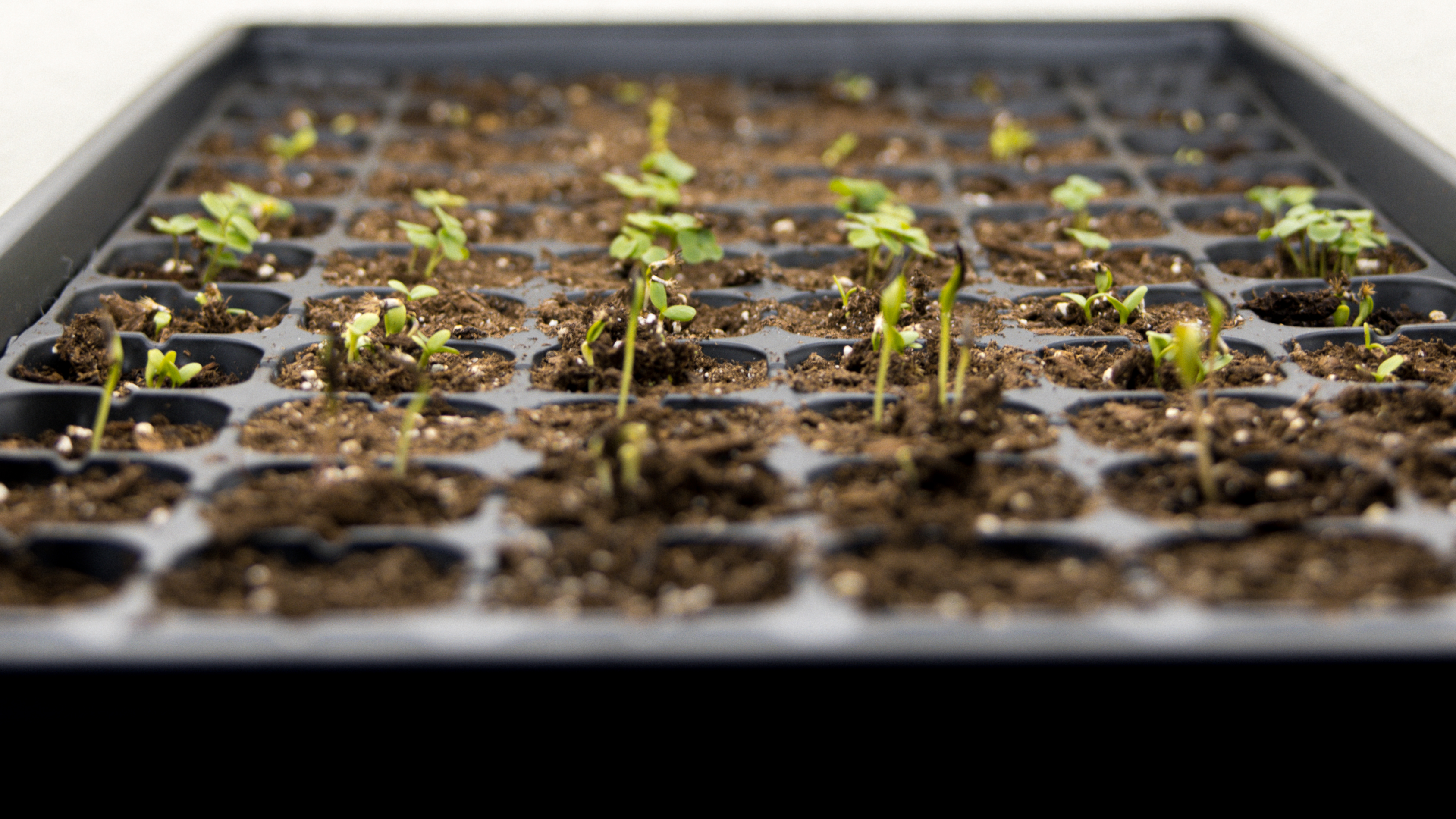One of the most wonderful aspects of gardening is there are endless ways to do it right. For instance, do you prefer to till your garden soil each year or slowly build up a no-till garden? Will you apply only compost or incorporate specialty fertilizers? Build neat rows of raised beds or plant dense patches into the ground?
The correct answers to all these questions, and many more, will vary based on your preferences and goals!
But how about another common question: should you start plants indoors to transplant later or sow seeds directly into the garden?
The answer is, “it depends”. Let’s take a closer look.
Plants You Should Start Indoors
Good plants to start indoors include slow growing warm weather plants like tomatoes, eggplants, and peppers. As are less common plants with similar growing conditions like malabar spinach, tamarillo, litchi tomatoes, and tomatillos. Leafy greens like lettuce, spinach, endive, and mizuna can all be effectively started indoors and transplanted to get a jump start on your first crop of the season. Slow growing cool weather crops like cabbage, broccoli, cauliflower, and brussels sprouts should be started indoors to provide them enough time to mature outdoors after the first frost but before the full heat of summer.

Why do Some Plants Benefit from Starting Indoors?
It’s important to understand the rationale behind the plants we listed above so you can make an informed decision for yourself on which to start indoors. In fact, many of them should only be planted indoors under certain circumstances!
Take a look at the major reasons some plants benefit from indoor seed starting.
- Long, warm growing seasons - Hailstone radishes and Mortgage Lifter tomatoes are both varieties of popular annual vegetables. Yet the former takes about 23 days to reach harvest maturity and the latter about… 85 days! That’s a huge difference and it’s made even more stark when you consider that the 85 days estimate is for the period after the established seedling has been transplanted outdoors. Add an extra 6-8 weeks on to include the germination phase and the early seedling growth period that normally happens indoors! In many climates, the warm weather simply doesn’t last that long, making indoor seed starting a logistical requirement for these long season warm weather plants.
- Long, cool growing seasons On the flip side are plants like broccoli, cauliflower, and brussels sprouts. These plants are notoriously tricky because they grow primarily after the last frost date and yet must reach harvestable size before summer heat sets in. That’s no problem for a fast growing plant like lettuce, but very challenging for these slow growers! The best option for most growers is to get them started indoors when the weather outside is still cool.
- Succession planting - If you plan ahead, it’s often possible to fit multiple harvests of even slow growing vegetables into your growing season. How? Indoor seed starting! By starting a new round of seedlings indoors before the plants outdoors have expired, you can replace a fading plant with a new one that’s already well on its way towards producing a harvest. With properly planned succession planting, you can save not only 1-2 months at the beginning of the season but another 1-2 months at the tail end.
- Better germination results - Have you ever carefully planted a packet of seeds only to be disappointed with the lack of germination? Starting your plants indoors is a great way to avoid bad germination. Indoors, your seeds are not only better protected from hungry animals and disease but you can more carefully control variables like temperature, humidity, light exposure, and more.
Many gardeners also mix and match strategies for the same plant. For instance, your first crop of leafy greens each year can be started indoors to hit the ground running and subsequent rounds can be sowed directly into the ground.

Why Start Plants from Seeds?
If you typically buy young plants at the nursery for your garden, you’ll need to transition to starting your own plants from seeds to reap the benefits of starting plants indoors. Luckily, there are many additional reasons why growing from seeds is a terrific way to level-up your gardening game!
Here are a few of the most important reasons to consider seed starting:
- Less expensive - Seeds packets are typically between $1 - $4 and contain dozens or even hundreds of seeds per packet. This means that a single plant can be grown for cents on the dollar compared to buying more mature seedlings.
- More variety - Nurseries ultimately have to make decisions about what plants to offer for sale. This can be helpful because they generally choose varieties that do well in your local climate, but it’s also extremely limiting. There are a truly breathtaking number of plants and varieties available to you once you switch to growing from seeds.
- Healthier plants - Once you get comfortable starting plants from seeds, you may find yourself with even more robust plants. With seeds, it’s economical to germinate many seedlings and keep only the strongest.
- Flexibility - When planting from seed, you can reduce the amount of space between plants to almost nothing. This extremely dense planting strategy can not only boost output but also reduce weed pressure when used with appropriate plants like leafy greens.
What Plants Should You Not Start Indoors
Not every plant is a great candidate to start indoors. While there are always exceptions, think carefully before adding these to your indoor seed starting list:
- Turnips, carrots, beets, and radishes should all be planted directly outdoors (or into their final container). Because you grow these plants in order to harvest their roots, it’s important to leave those roots alone as much as possible. Transplanting always carries some risk of damage.
- Most plants quickly recover from transplant shock, but not those with fragile root systems like cilantro.
- Starting corn, sunflower, and other super fast growing plants indoors offers no benefit and takes up space that can be used more efficiently. Plant these seeds directly into the garden.

What kind of Setup Do You Need for Indoor Seed Starting?
Indoor seed starting has an unfair reputation for being complex and expensive. Neither have to be true.
All you need to start are some containers to put the dirt and seeds into, a tray with raised sides to catch water, and a warm, bright spot by a window. We wrote up a short article on how to get started quickly and cheaply for beginners.
If you want to invest a little more time and money into your indoor seed starting setup, it’s basically a matter of hanging lights onto a shelving unit lined with heat mats. Here’s a DIY build guide and a set of step-by-step indoor seed starting instructions we wrote to make the whole process pretty painless. They’re also available in video form if you prefer!
